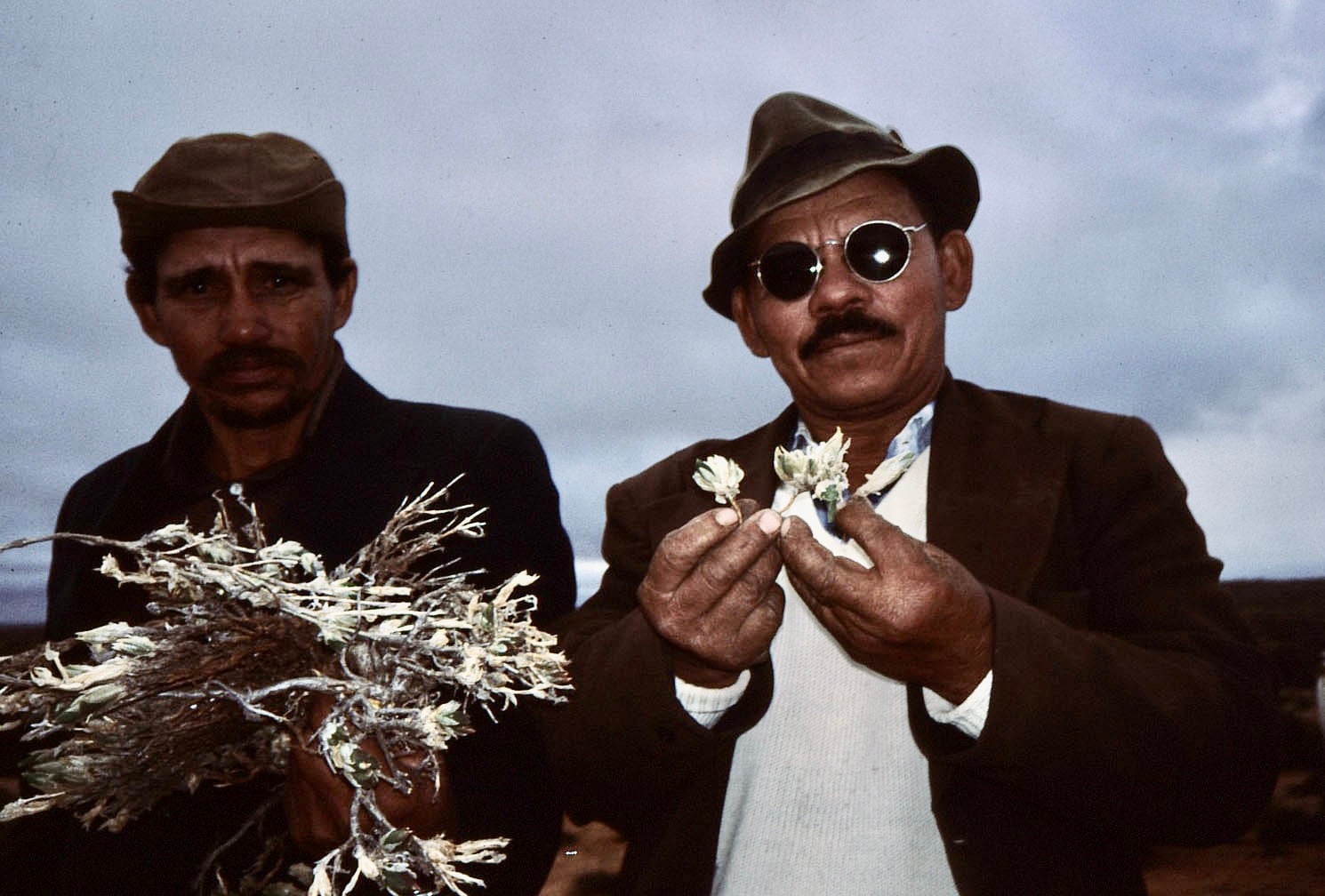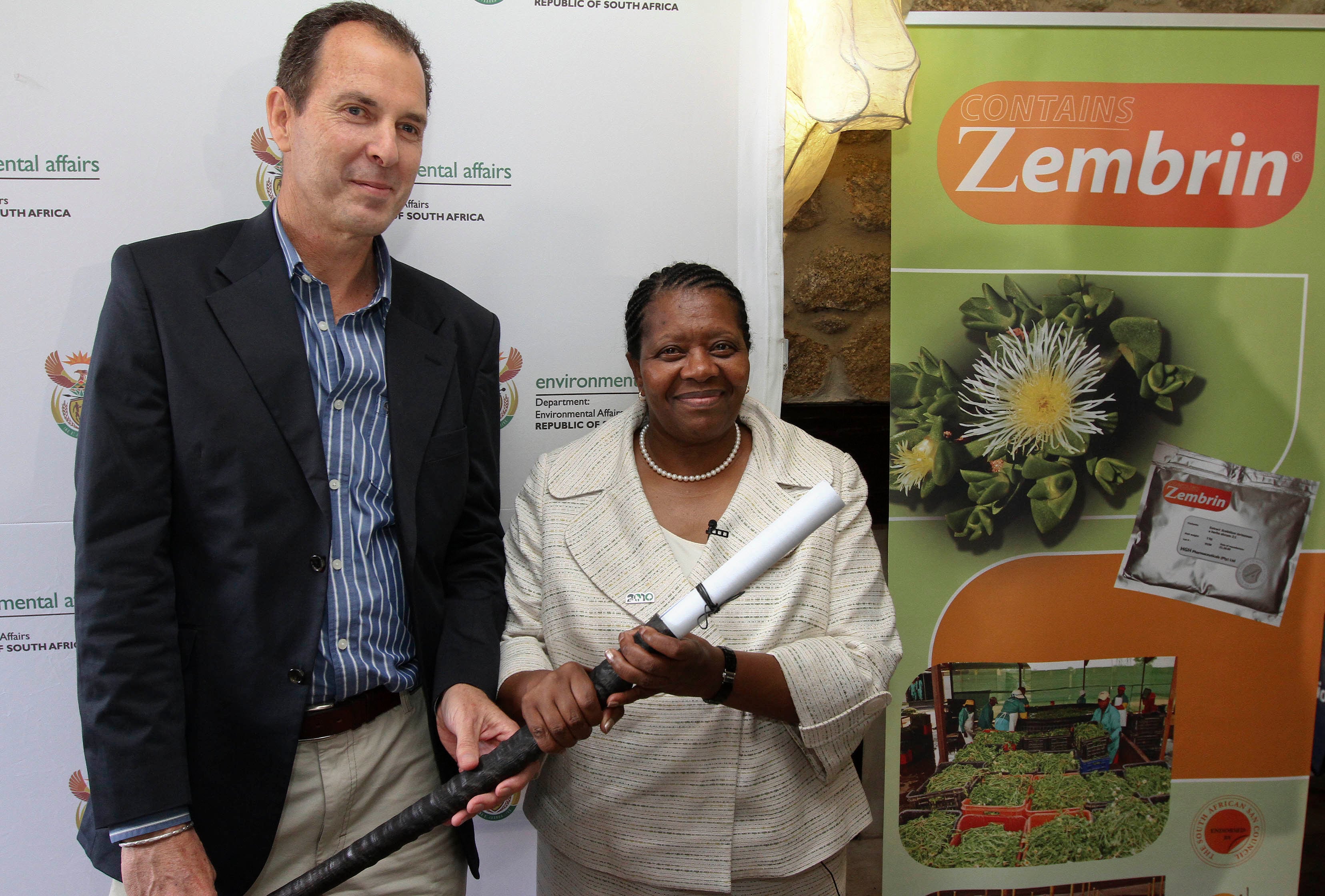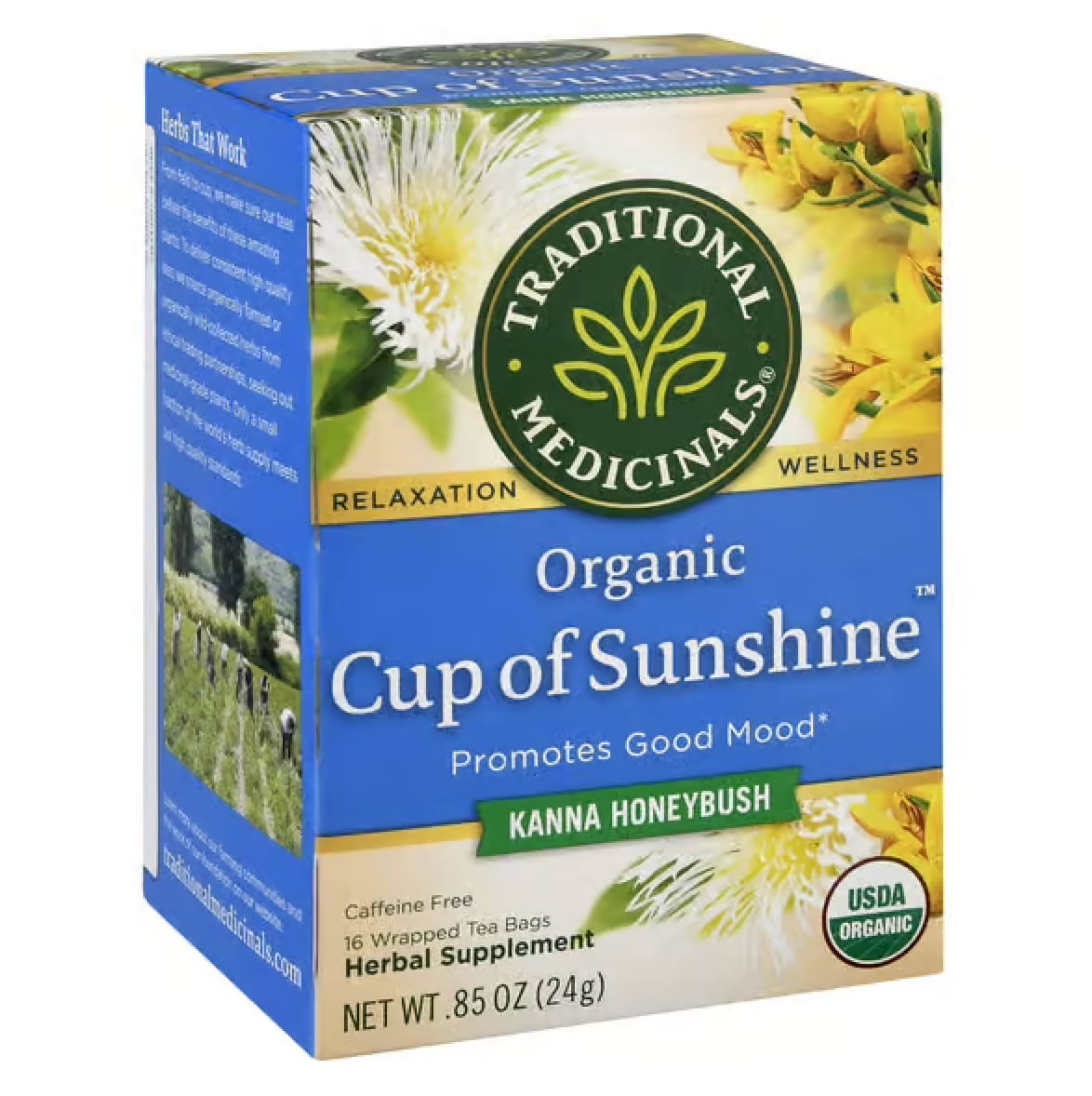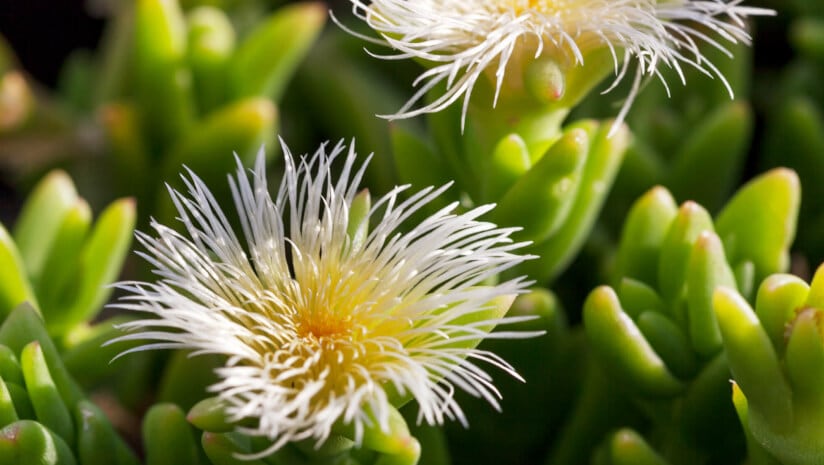Known by many names over the years—kanna, channa, kougoed, sceletium and most recently and officially as Mesembryanthemum tortuosum, it has been used to soothe colic in infants, stave off hunger, numb pain, boost endurance, elevate mood and act as both a sedative and intoxicant.
Today, there are over 50 products listed in the National Institutes of Health Dietary Supplements Label Database as containing kanna in the U.S. market, but a search on Amazon—which until recently had prohibited the ingredient as an herb that mimics the actions of banned substances—returns a larger selection of products in gummy, powder, liquid and capsule format, marketed for calm, focus and flow.
A much-prized item of trade
The earliest commercial references to kanna appear in the 17th century when trading ships, anchored at the Cape of Good Hope, collected the plant’s roots on their way to the East Indies.
Upon his arrival to the Cape in the southern hemisphere winter of 1610, Peter Floris, a lieutenant on board the English East Indiaman merchant ship The Globe, reported that the crew “used great diligence” to seek out kanna root as it had been tasked by the British East India Company.
“Being winter tyme, there was for this tyme no more to bee done but to go awaye as wyse as wee came, for the olde roote being decayed and rotten, the new leaf began onely to come foorth, so that had it not bene by reason of some information that was gotten of one who here shalbee nameless for dyvers considerations sake, wee shoulde have bene fayne to have departed without notice thereof, the right time of gathering the same being in December, January, and February, being called by the inhabitants Canna,” he wrote in his journal.
Although The Globe departed without kanna in store, the desert-growing succulent continued to be mentioned by European traders, expeditioners and missionaries. Often likened to Chinese ginseng, it was considered a source of power for local chieftains and a much-prized item of trade.
A journal entry from a Dutch expedition in 1658 to locate the Copper Mountains in the northern territory of the Namaqua people accompanies a watercolor depicting sceletium and its distinctive skeletonized lower leaves. The author classified the plant as one held in great esteem by the surrounding tribes.
“They chew the stem as well as the roots, mostly all day, and become intoxicated by it, so that on account of this effect and its fragrance and hearty taste one can expect some profit from its cultivation,” the entry reads.

Visitors over the next two colonial centuries observed medicinal use by the indigenous San hunter-gatherers and Khoi pastoralists for both sedative and intoxicant effects.
“What greatly enflames the Value of this Root, is its Scarcity; for ‘tis very rarely found,” wrote Peter Kolben, a German astronomer and ethnologist who was commissioned to produce a comprehensive description of South Africa by the mayor of Amsterdam, published in 1719. “They look upon it as the [greatest] Chearer of the Spirits, and the [noblest] Restorative in the world. They will give [almost] any Thing in Exchange for it; and will, any of ‘em, run Twenty Miles upon an Errand, or perform a hard Day’s Work, for a very small Bit of it.”
Zembrin comes to market
Today, the most widely commercialized sceletium extract is Zembrin, a product of the preservation of indigenous knowledge developed from a specific and proprietary chemotype rich in actives that balance mood and cognition without sedative effects.
In late 1991, South African doctor and ethnobotanist Nigel Gericke was researching South African plants with psychedelic activity when he received a sample of kanna from fellow ethnobotanist Fiona Archer, who had been documenting local plant uses in Namaqualand.
“Fiona gave me a brown paper bag containing about 500 g of stringy, brown, traditionally fermented and dried sceletium,” he shared in a 2018 account. “I chewed a few grams of the plant material, and after about 15 minutes, the plant caused a rather sudden rush of euphoria. Over the following hour, this gradually changed to a feeling of deep calm that persisted for some four or five hours.”
After an initial period of self-experimentation with friends and colleagues, the experiences of which are documented in a 1996 paper, Dr. Gericke studied kanna in the field with Dr. Greg McCarthy, an academic addictionologist. They spoke with shepherds, elders and traditional healers in rural hamlets to record local uses and determine its addictive potential.

“While kougoed [an Afrikaans term for kanna meaning ‘chewing stuff’] is used as a euphoriant or intoxicant, almost solely by elderly men, its medicinal qualities are highly regarded by the entire community,” Dr. Gericke reported. “The recognized medicinal uses include use as a hypnotic or sedative, as a mild laxative, as a gripe-water, for abdominal cramps and for alcohol rehabilitation. All research participants were adamant that kougoed was less habit-forming than alcohol, tobacco or dagga [Cannabis sativa].”
Here he discovered that lower doses were used daily to promote a general sense of well-being, adding that administration for specific indications at these lower doses and less frequently for a finite time must “be seen entirely separate from use as a euphoriant.” The Namaquas also distinguished between two varieties of Sceletium tortuosum—a tame and milder mak chemotype and a wilde chemotype that is potentially intoxicating if consumed in high doses, particularly if allowed to ferment before drying.
Several winters later, Dr. Gericke retraced the trail of the earlier Dutch expedition, accompanied by his young children and wife Olga, an integrative psychiatrist, who has since investigated sceletium as complementary and integrative treatment for symptoms of neurodegeneration.
By 1999, Dr. Gericke’s consulting company, African Natural Health Close Corporation, had contracted German company Gerhrlicher GmbH to produce the first fully standardized kanna extract from Sceletium tortuosum. It was then brought to European Union good manufacturing practice standards by Spanish company Nektium Pharma SL (formerly known as Polifenoles Naturales SL), which continues to produce Zembrin on contract for HG&H Pharmaceuticals (Pty) Ltd., a company co-founded by Dr. Gericke with the South African conglomerate Halls Group and horticulturalist Deon Hofmayer in 2006.
Regulated in the food category in South Africa, the branded ingredient entered the U.S. market in 2012 as a stress/mood product with self-affirmed generally recognized as safe (GRAS) status after an unsuccessful new dietary ingredient notification (NDIN) to the U.S. Food and Drug Administration. Two years prior to launch, HG&H Pharmaceuticals and the South African San Council signed a landmark benefit-sharing agreement recognizing the San people as the traditional knowledge holders of sceletium, as well as the ethnobotanical contributions of the Nama hamlets of Paulshoek and Nourivier in which Dr. Gericke worked.

According to PLT Health Solutions, the exclusive distributor of Zembrin in the United States, the ingredient has now been featured by over 100 consumer brands across categories including stress, cognition, sports recovery and weight management. In June, the extract went mainstream when Tylenol launched into the supplement space with a joint health product listing Zembrin on label, accompanied by a “Promotes calmness to help your body manage occasional stress*” tagline. Other brands formulating with Zembrin include Nature’s Bounty, doTERRA, Tom Brady’s TB12, Bulletproof, Pure Encapsulations, NOW Foods, Jarrow, Solaray, Amare Global, Force Factor, The Absorption Company, First Day, GNC and Nutrabolt.
Zembrin also holds an approved Master File and Natural Product Numbers with Health Canada to “support cognitive function in adults” at the 25 mg dose. In Europe, where sceletium does not meet the minimum threshold of recognized traditional use, companies would have to pursue botanical drug approval to bring a legal sceletium product to market.
Cultivation, variability and the holy grail
Traditionally, kanna was collected in the wild in the Cape provinces of South Africa during the dry season months from October through January. As interest in its potential psychoactive and anxiolytic properties grew in the late 1900s and early 2000s, overharvesting and biochemical variability of wild-harvested material prompted a transition to cultivation.
Although native to the drier semi-arid to arid areas in South Africa, it is now grown across the Cape and into Namibia in greenhouses, under shade cloth and on open land. Notably, Zembrin is cultivated at HG&H‑controlled sites in the northeastern Mpumalanga and Limpopo provinces—purpose‑built to move away from wild harvesting and ensure a standardized chemotype.
“HG&H partners with local growers under sustainable programs, and propagation via cuttings preserves the precise chemotype,” said Seth Flowerman, CEO of PLT Health Solutions. “Plants are harvested and fermented using traditional techniques, then dried and extracted via supercritical CO₂. Each batch is tested for potency and purity.”
He added that Zembrin’s controlled, sustainable cultivation program not only ensures consistent quality and traceability but also supports scalability, with tens of millions of viable seeds held in reserve. At a 25 mg dose, one metric ton can supply around 1.3 million bottles.
Other South African companies involved in kanna cultivation and supply include Afrigetics Botanicals, The Sceletium Source, HP Biotech, Kanna Extract Co., Grassroots Natural Products, Verve Dynamics and Parceval.
German horticulturist Ulrich Feiter, founder and CEO of Parceval, says that there is no foolproof method for cultivating sceletium to reach the target percentage of alkaloid actives.

His company grows over 100 varieties of medicinal plants on its organic, biodynamic farm in the biodiverse Cape Floral Kingdom region, manufactures extracts and tinctures (though not of sceletium), sets up global supply chains for companies and consults on bioprospecting compliance. For a time, Parceval supplied the sceletium used in Traditional Medicinals’ Cup of Sunshine tea, which came to market in early 2017 and exited a couple of years later due to instability in the supply chain.
According to Feiter, at the beginning of sceletium commercialization in the mid-2010s, biomass was king, but he said that has changed dramatically over the years as understanding of the plant’s complexity grew. Parceval continues to experiment with growing techniques to optimize kanna chemistry and highlighted the many factors that contribute to desirable alkaloid content: parentage, geography, cultivation conditions, age, stress, time of day, harvest season and growing companions.
“One has to remember that if you place sceletium plants from different regions together—even if you’ve tested their alkaloid content—putting them side by side in a greenhouse or shade house can have unintended effects,” Feiter said. “Through cross pollination, you can quickly lose the distinct genetic traits of their original sources. If you then collect seeds from these mixed plants, you might end up quite disappointed.”
In 2020, Cape Peninsula University of Technology researchers investigated how different fertigation regimes affected alkaloid concentrations in Sceletium tortuosum grown in soilless mediums. The study evaluated 20 treatments, each with 15 sample replicates, using a total of 300 plants propagated from a mother plant sourced from Verve Dynamics. Findings supported the idea that Sceletium tortuosum responds to biotic and abiotic stresses by controlling the influx of secondary metabolite concentrations.
“Results from this experiment showed that different soilless growing media and fertigation had varying effects on alkaloid concentrations in S. tortuosum,” the researchers reported in the journal Heliyon. “It was also observed that roots contained higher amounts of delta 7 mesembrenone and mesembrenone, while shoots contained higher amounts of the alkaloid mesembrine.”
Feiter emphasized the importance of local conditions and noted that the kanna cultivation and extraction community is not one to disclose its cultivation and processing techniques.
“Nobody wants to share because everybody thinks they have the holy grail,” he said. “To some extent they do because they must very carefully understand how sceletium reacts to the local conditions, so it’s a very individual approach that you have to take when cultivating. You can’t rely on a super clone that you have transplanted 200 km further inland where the conditions are completely different.”
The therapeutic intention is in the alkaloid composition
Sceletium contains a group of mesembrine-type alkaloids, which vary in content and relative concentration depending upon not only plant strain and growing conditions but particularly processing method. The intended therapeutic effects, as traditional knowledge and emerging science have shown, are in the details of the final composition of the ingredient’s alkaloid content, responsible for its physiological and pharmacological effects.
Mesembrine, usually the most abundant and active alkaloid, acts as a serotonin reuptake inhibitor (SRI) and is associated with the plant’s mood enhancing qualities. Higher levels of mesembrenone and mesembrenol reportedly confer more calming or sedative effects.
Through extraction, Zembrin, for one, contains 0.4% total alkaloids by weight, with the relative alkaloid composition of mesembrenone and mesembrenol of at least 60%, mesembrine of less than 20% and a detectable level of mesembranol.
“Zembrin is standardized to a defined total alkaloid range with a specific, proprietary standardization, ensuring consistent effects across batches,” PLT’s Flowerman said. “Generic extracts typically standardize to ‘total alkaloids’ without controlling the ratio of individual alkaloids, so their effects can vary. Some may be more sedating or more stimulating from batch to batch.”
The fast-acting effects of Zembrin’s alkaloid composition—which PLT markets as “experiential”—are backed by seven published safety and efficacy trials in healthy humans. These support this specific alkaloid composition for anxiety relief and aspects of cognitive function and sleep onset at a 25 mg dose.
A 2021 paper published in the journal Current Neuropharmacology noted that while most of the sceletium research to date is on Zembrin and all in healthy subjects, the clinical research base is still exploratory and that standardized sceletium, with its low side-effect profile, also offers “great potential” as an anxiolytic and allayer of subclinical depression. Research continues to explore sceletium’s neuroprotective and neurorestorative potential as phytomedicine.
“The foundation is actually pretty good in terms of how sceletium works,” said Thomas Brendler, PhD, lead author on the study and founder of herbal product consultancy Plantaphile. “What’s missing is good clinical evidence. So far, there have been some dose finding studies in humans, which are sufficient to justify a structure-function claim.”
Dr. Gericke, who also contributed to the 2021 review, noted the importance of selecting specific chemotypes of the plant for extraction that align with the intended use of the final product.
“Responsible companies entering this area need to offer the consumer a safe, effective, reproducible, evidence-based product,” he said. “It is essential as a minimum to standardize sceletium extracts to both total alkaloid content and relative alkaloid composition and be able to consistently reproduce the alkaloid specifications established. All sceletium raw materials have to be cultivated. From a sustainability point of view, you simply must not wild harvest this plant”.
On the importance of quality and credit due
The South African Botanical Products Association (SABPA), established in 2024 to facilitate regulatory pathways and market access for South African herbal products, has several initiatives underway to ensure the quality of the sceletium on the market. Dr. Brendler is head of regulatory affairs and Parceval’s Feiter is chairman of the association.
“One of SABPA’s mission topics is to develop a quality control method that yields reliable results and is simple enough to establish without needing high tech but uses an HPLC or HPLTLC method that will reliably determine total alkaloids in sceletium,” Dr. Brendler said. “It will be derived from all the existing methods and probably use a compound reference standard.”
Paula Brown, PhD, director of applied research at the British Columbia Institute of Technology, is working on establishing a robust method to support quality control efforts.
“For kanna, there are published analytical methods available and many with validation data to support their use, however the major challenge is the reliance on chemical reference materials,” she said. “We have gone to extraordinary lengths to acquire alkaloids from a variety of sources and have found many are not the reported purity and in some cases are not the correct compound at all.”
As part of the method development, SABPA gathered 26 commercial products in powder, extract, capsule, tablets, gummy and a chewing gum format. Seven of the products were in combination with other ingredients, such as other plants, GABA, tyrosine, L-theanine and vitamin B6.
“For over 25% of the products, we found either no kanna at all or very trace amounts,” Dr. Brown noted. “Many products did not make a claim beyond content, but for those that did, the majority were sub-potent, although a couple products were close to 150% more potent than expected.”
SABPA is also developing botanical reference standards to address the problem of sceletium species confusion.
Beyond sustainable sourcing, job creation in underserved rural areas, standardization, verification and benefit sharing, Dr. Gericke emphasized the importance of recognizing the contributions of indigenous knowledge and its long lineage of traditional healers—some from now extinct groups—in product creation and consumption.
He cited two first-hand accounts of sceletium use that he identified in the Bleek and Lloyd Archive of records on San language and folklore, a collection inscribed on the register of UNESCO’s Memory of the World Programme in 1997.
One is an 1873 annotation on kaauwgoed from a local informant called ≠Kasin that reads: “If a little child that is still being suckled is ill inside, they take a little piece of it, & put it in to a spoon of cold water, & rub it about in it, the water becomes yellow (like tobacco water), and they give it to the child to drink.”
The other, also documented as kaauwgoed and contributed by a teacher and elder in the Ixam community named ǁKabbo, describes the adaptogenic effects of “a small plant found on the great mountains growing out of crevices in the rocks.”
“It is chewed by Bushmen and gives strength to their limbs; and takes away [pain] and makes their memory strong,” he reported.

